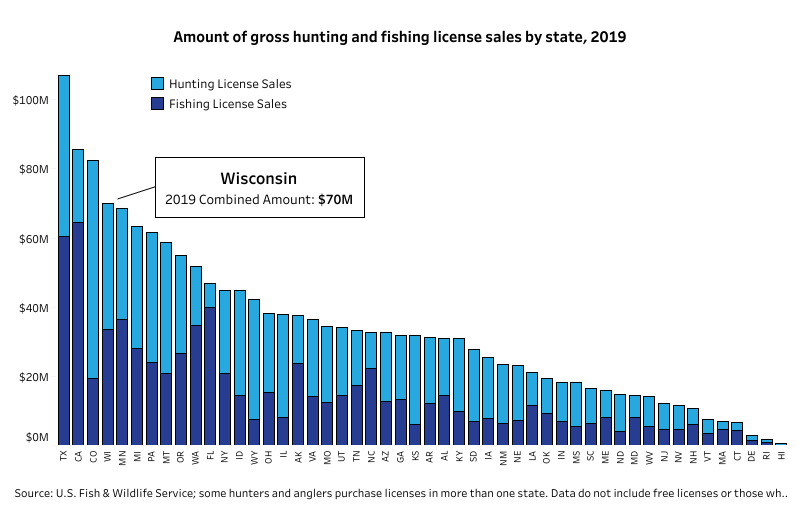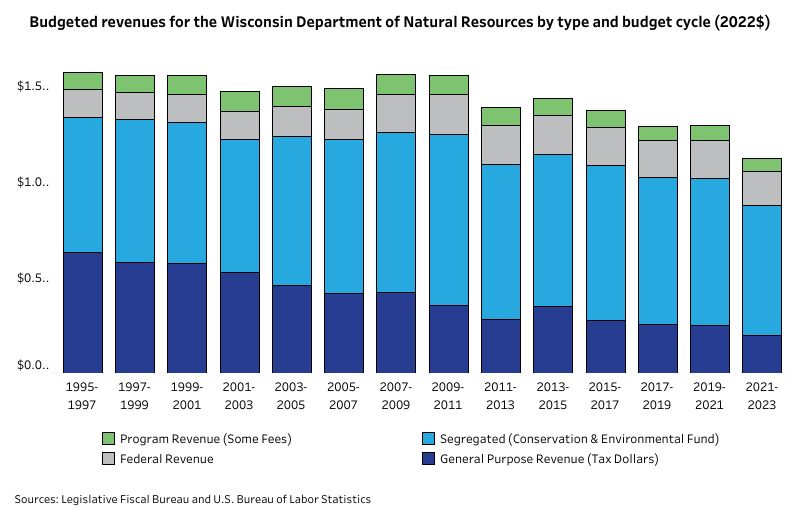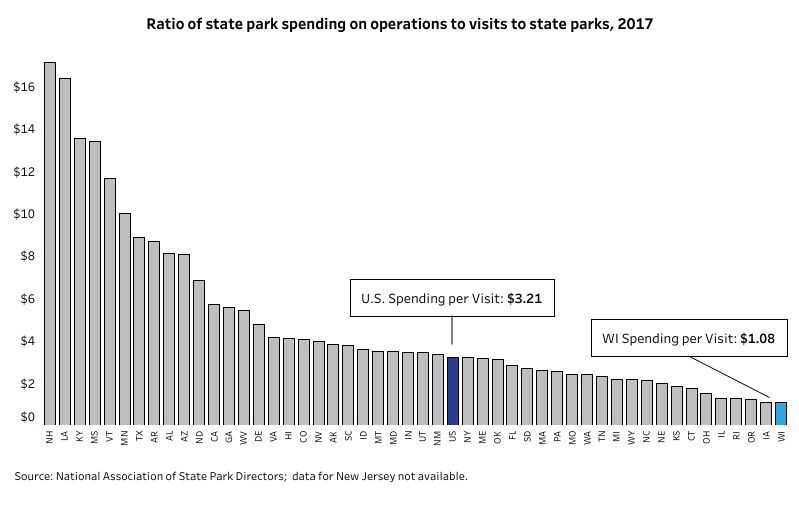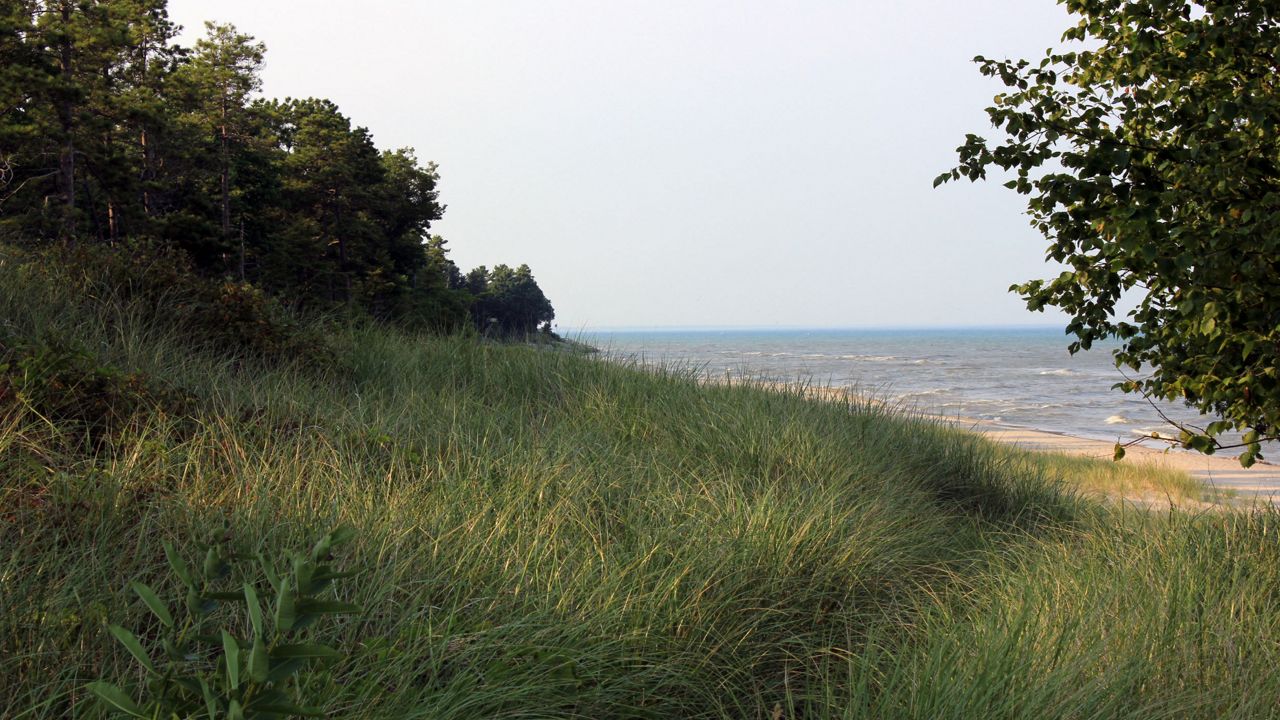WISCONSIN — Over the last few years, participation in outdoor activities has risen in Wisconsin. Yet, funding for conservation efforts has plummeted, according to a new study by the Wisconsin Policy Forum.
What You Need To Know
- Wisconsin has historically been a top state for outdoor pursuits
- State park visits went up 27.2% from 2019 to 2021, following the pandemic
- Yet, state budget funding saw a 40.9% decrease from the years 1995-97 to 2021-23
- Increasing existing fees and redirecting some of the state’s existing real estate transfer fee revenue were just some of the many suggestions by Wisconsin Policy Forum
The study looked at the state’s natural assets and history of outdoor pursuits. It also examined current conservation financing and the approaches used in other states.
“While Wisconsin once stood out among the 50 states in this respect, it has now drifted more toward the middle of the pack in many key indicators,” said Wisconsin Policy Forum in their report.
From hunting to hiking, Wisconsinites have a wealth of outdoor pursuits and passion, drawing in lots of visitors and tourists.
Yet, Wisconsin Policy Forum’s latest report on funding shows that could be put in jeopardy.
Outdoor recreation rising
Wisconsin has historically been a top state for outdoor pursuits. The state ranked 16th out of all 50 states for its Gross Domestic Product in outdoor recreation, according to the U.S. Bureau of Economic Analysis.
In 2021, the industry added $8.71 billion to the state’s economy and supported more than 89,000 jobs.
When you break that down to just hunting and fishing license sales in 2019, Wisconsin was the fourth-highest total nationally, grossing $70 million.

Following the pandemic, state park visits skyrocketed. They went up 27.2% from 2019 to 2021. Vehicle park sticker purchases also climbed during this same period, rising 52.5%. This was even higher for out-of-state purchases, which increased by 77.7%.
This increase in interest for state parks and in outdoor recreation opposes the staggering amount of public funding for it, according to the Wisconsin Policy Forum.
Erosion of state funding
State tax funding, or General Purpose Revenue, for conservation programs and the Department of Natural Resources has seen a “steady erosion” throughout the years, according to the Wisconsin Policy Forum study.
Without taking inflation into account, state budget funding saw a 40.9% decrease from the years 1995-97 to 2021-23. The state received $334.3 million in the 1995-97 budget; that dropped to $197.5 million in the latest budget.
However, when adjusting for inflation, that difference becomes more staggering — it becomes a 68.8% decrease.

A decrease in funding is also one reason why Wisconsin only spent $19.6 million in 2017 to operate its parks. This was the lowest amount of spending in the country, according to annual surveys from the National Association of State Parks Directors.
Wisconsin Policy Forum officials said the decline can be attributed to multiple different funding shifts.
Some available funds have been shifted to things like Medicaid, K-12 schools, state prisons or tax cuts.
Post-recession budgets, such as those in 2003-05, 2009-11, and 2011-13, saw large funding cuts. These cuts were never restored despite what forum officials call a “stronger tax growth.”

Forum officials said this may suggest that “state leaders have seen it (conservation) as a low priority.”
Officials explained that instead, state leaders have “moved to greater reliance on fees and other funds to pay for state parks and park and forest roads, cut administrative costs, and made position cuts and across-the-board spending reductions.”
In light of these facts, Wisconsin Policy Forum officials suggested several other means to fund conservation in the future.
Funding solutions
Past agency proposals and a review of other states by the forum present several ways parks could be funded in the Badger State.
Here are just a few:
The group’s first suggestion was to increase existing fees to match inflation. According to the group, this would raise $24 million in hunting and fishing fees.
The forum also suggested redirecting some of the state’s existing real estate transfer fee revenue to conservation efforts and public lands.
Another suggestion was to provide current or new sales tax revenues for parks and conservation. The forum pointed to Missouri, Texas, and Iowa as model states. They offered the example of Minnesota, where the state has generated $2.9 billion for clean water, parks and trails and much more with their 0.375% sales tax.
Wisconsin Policy Forum officials recognized that many of their suggestions have pros and cons but that they are worth considering.
Officials said as outdoor activities continue to rise, the tension between maintaining heritage, addressing future needs and the level of conservation efforts will only be heightened.






